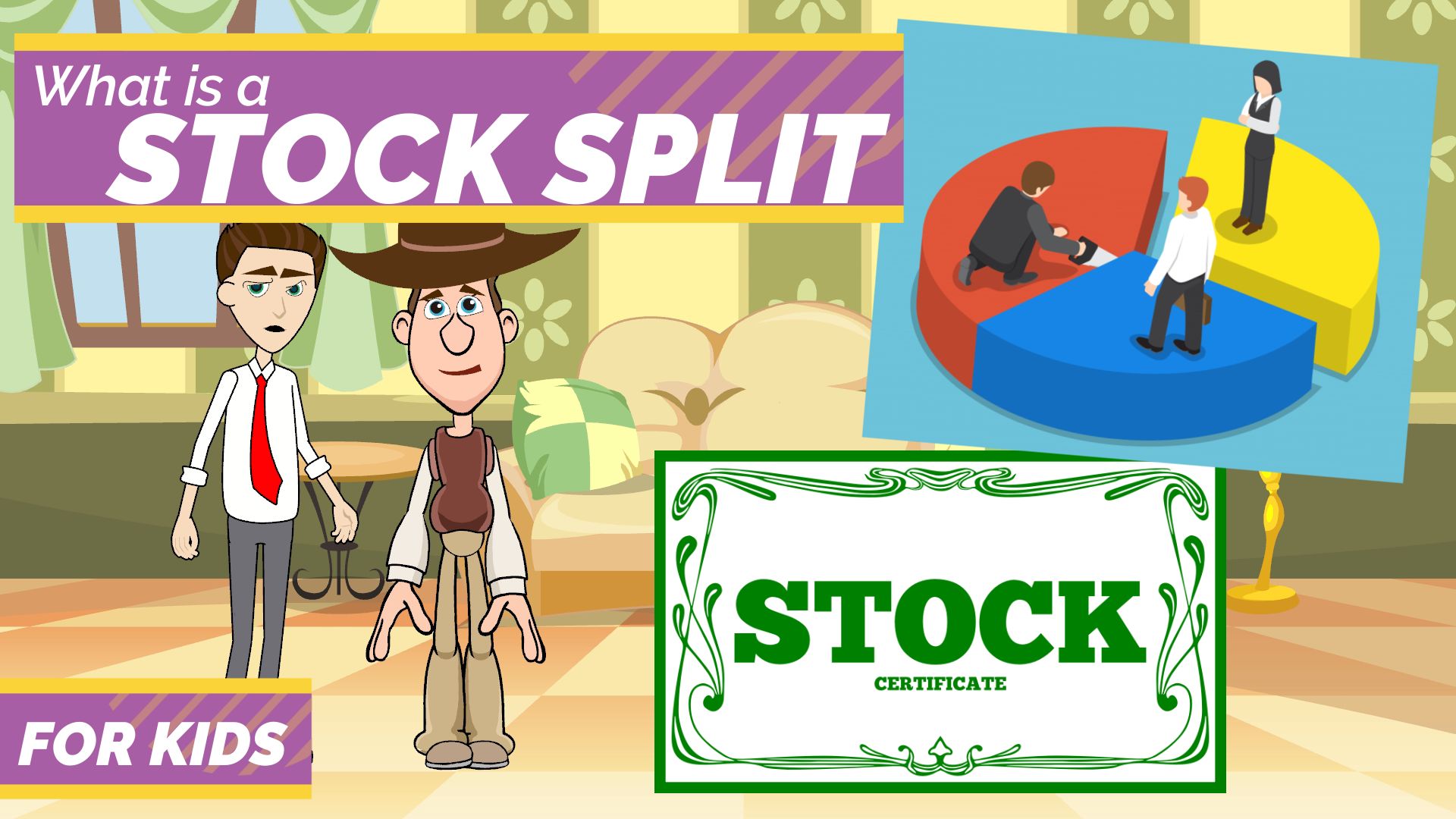Introduction to Stock Split for Kids and Teens
This video explains the concept of a stock split in a simple, concise way for kids and beginners. It could be used by kids & teens to learn about stock splits, or used as a money & personal finance resource by parents and teachers as part of a Financial Literacy course or K-12 curriculum.

Suitable for students from grade levels:
- Kindergarten
- Elementary School
- Middle School
- High School
The topics covered are:
- What is a stock split
- What happens if I own a stock and it splits
- Why does a company do a stock split – what are the advantages of a stock split
- What is a reverse stock split
What is a stock split?

A stock split, also called traditional stock split or forward stock split, is a type of corporate action where a company divides each of its shares into 2 or more shares.
If a company splits each share into 3 shares, it’s commonly represented as a 3-for-1 split.
After a split, the total number of shares goes up, but the company’s value, also called its market capitalization, stays the same because each share goes down in price after the stock split.
What happens if I own a stock and it splits?
Let’s say you own 10 shares in company X, and the stock price is $100. The total value of your holdings is $1,000.
If there is a stock split where each share is split into 2 new shares, then you would own 20 of these new shares. However, the price of each stock will now be only $50, keeping the value of your holdings unchanged at $1,000.
So, the total value of your stocks – and that of the company – does not change after a stock split, as the increase in share quantity is offset by the decrease in share price.
Why would a company do a stock split? What are the advantages of a stock split?
Companies always want to be an attractive option for investors. But, if the stock price becomes too high, it can make investors reluctant to buy the shares.

So, the company can perform a stock split to make the shares more affordable to new and existing investors.
Stock splits also increases the liquidity of the company’s stock as more shares are available, which makes trading in that stock a lot easier and faster.
Although technically a stock split has no effect on the total market value of the company, for some popular companies, their affordability brings sudden investor interest – driving up the stock price.
For example, in 2014 the stock price of Apple was $700. Apple did a 7-for-1 split, bringing the price of each share down to $100, while giving each shareholder 7 times the shares. This also made the stock very attractive to new investors.
I’ve heard of something called a reverse stock split. What is that?
A reverse stock split is the exact opposite of a traditional stock split. In a reverse stock split, instead of splitting each share into multiple new shares, multiple existing shares are combined into one new share.
This in turn increases the price of each individual share, without affecting the company’s market capitalization.
This is usually done when the stock price of a company gets so low that the company is at a risk of getting delisted from a stock exchange.
It can also help the company improve investor perception, as a very low stock price may be perceived negatively.
Download Transcript: Ideal for Use by Teachers in their Lesson Plan to Teach Kids & Teens
Podcast: What is a Stock Split
Fun, informative and concise episodes by a 10-year old, breaking down complex financial concepts in a way that kids and beginners can understand. Episodes cover personal finance topics like saving, investing, banking, credit cards, insurance, real estate, mortgage, retirement planning, 401k, stocks, bonds, income tax, and more, and are in the form of a conversation between a cowboy (a finance novice) and his friend, a stock broker. Making finance your friend, only at Easy Peasy Finance.
A little bit about me: I have been fascinated with the world of personal finance since I was 6! I love to read personal finance books, and keep myself updated on the latest by reading various personal finance magazines. My friends often ask me questions about finance because they find it complex and intimidating. That’s what inspired me to start my YouTube channel called Easy Peasy Finance when I was 8, and this podcast 2 years later.
Everything you need to know about stock splits: What is a stock split, What happens if you own a stock and it splits, Why does a company do a stock split – what are the advantages of a stock split, What is a reverse stock split, and more. Show notes and transcript at: What is …


